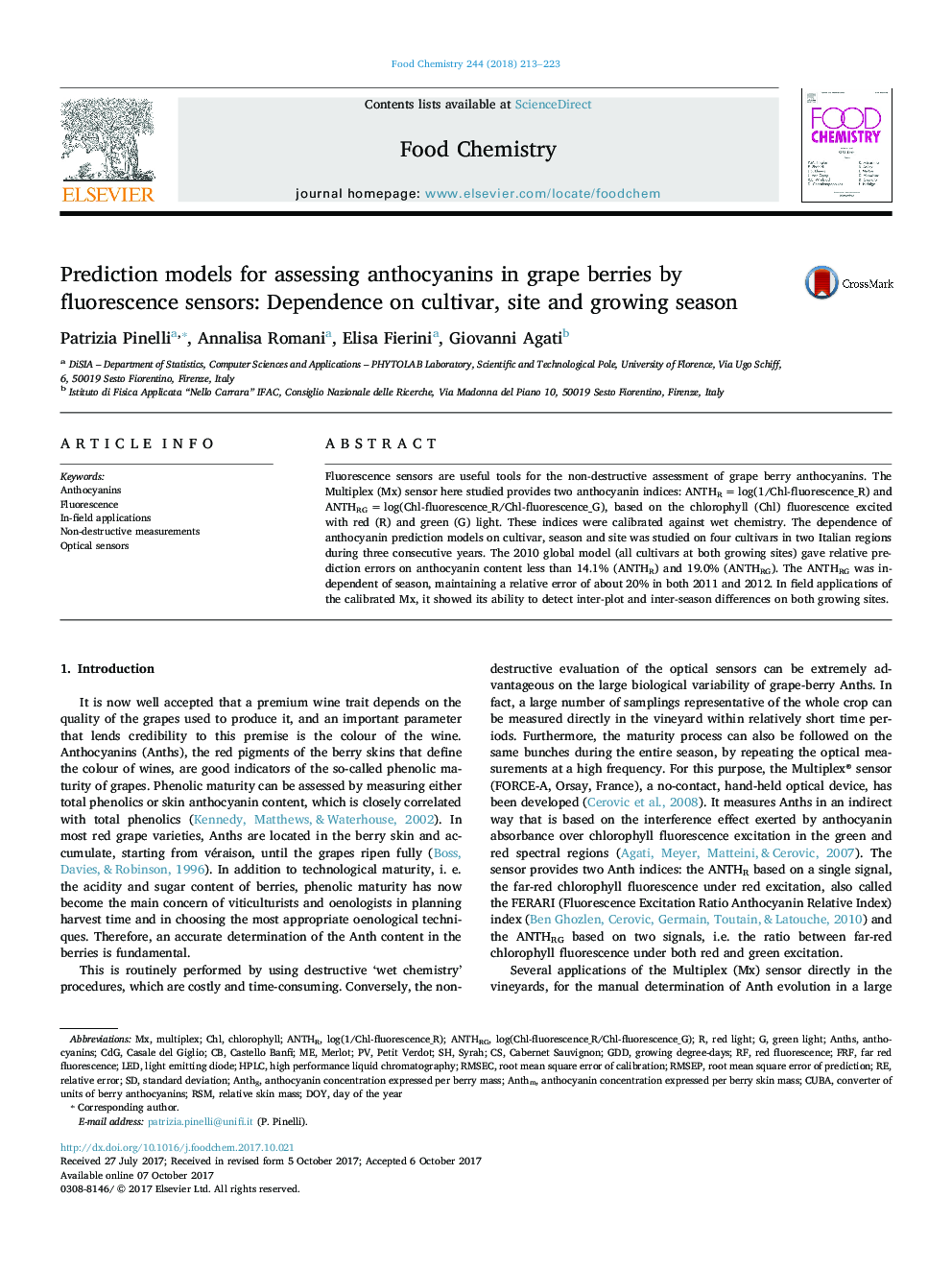| Article ID | Journal | Published Year | Pages | File Type |
|---|---|---|---|---|
| 5132405 | Food Chemistry | 2018 | 11 Pages |
â¢Fluorescence sensors were calibrated for in situ assessing grape anthocyanins.â¢Anthocyanin prediction was rather independent of grape cultivar and growing site.â¢ANTHRG index was less sensitive than ANTHR to the seasonal effect on the calibrations.â¢Massive optical samplings differentiated plots even with high anthocyanin variability.
Fluorescence sensors are useful tools for the non-destructive assessment of grape berry anthocyanins. The Multiplex (Mx) sensor here studied provides two anthocyanin indices: ANTHRâ¯=â¯log(1/Chl-fluorescence_R) and ANTHRGâ¯=â¯log(Chl-fluorescence_R/Chl-fluorescence_G), based on the chlorophyll (Chl) fluorescence excited with red (R) and green (G) light. These indices were calibrated against wet chemistry. The dependence of anthocyanin prediction models on cultivar, season and site was studied on four cultivars in two Italian regions during three consecutive years. The 2010 global model (all cultivars at both growing sites) gave relative prediction errors on anthocyanin content less than 14.1% (ANTHR) and 19.0% (ANTHRG). The ANTHRG was independent of season, maintaining a relative error of about 20% in both 2011 and 2012. In field applications of the calibrated Mx, it showed its ability to detect inter-plot and inter-season differences on both growing sites.
